53 Other Flower Characteristics and Terminology
Symmetry
When a flower can be cut into equal halves along more than one line, then the flower has radial symmetry and is called regular.
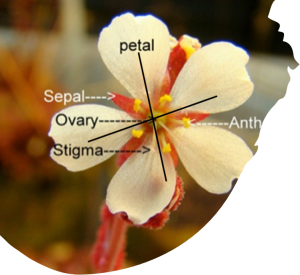
If a flower has only one line of symmetry then it has bilateral symmetry and is considered irregular.
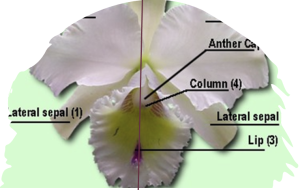
Solitary
When there is only one flower in a terminal position or in the axil between the leaf and the stem on a plant, it is a solitary flower plant.
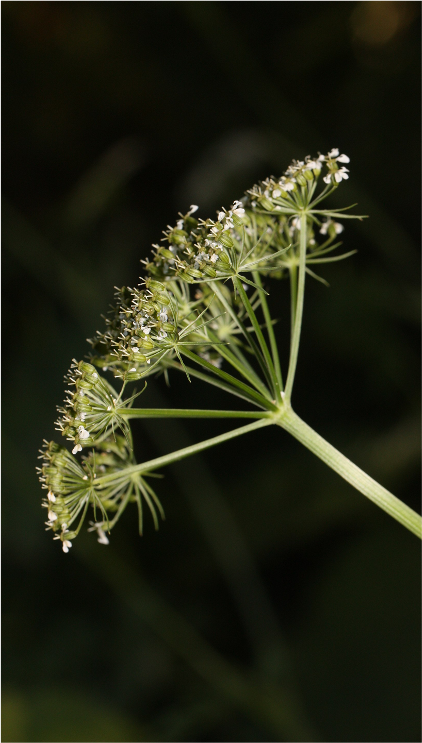
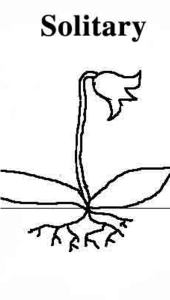
Inflorescence and related terminology
If a flowering branch carries more than one flower, it is called an inflorescence, or cluster.
Peduncle-The branch bearing the flower or inflorescence.
Pedicel-The stalk of an individual flower in an inflorescence.
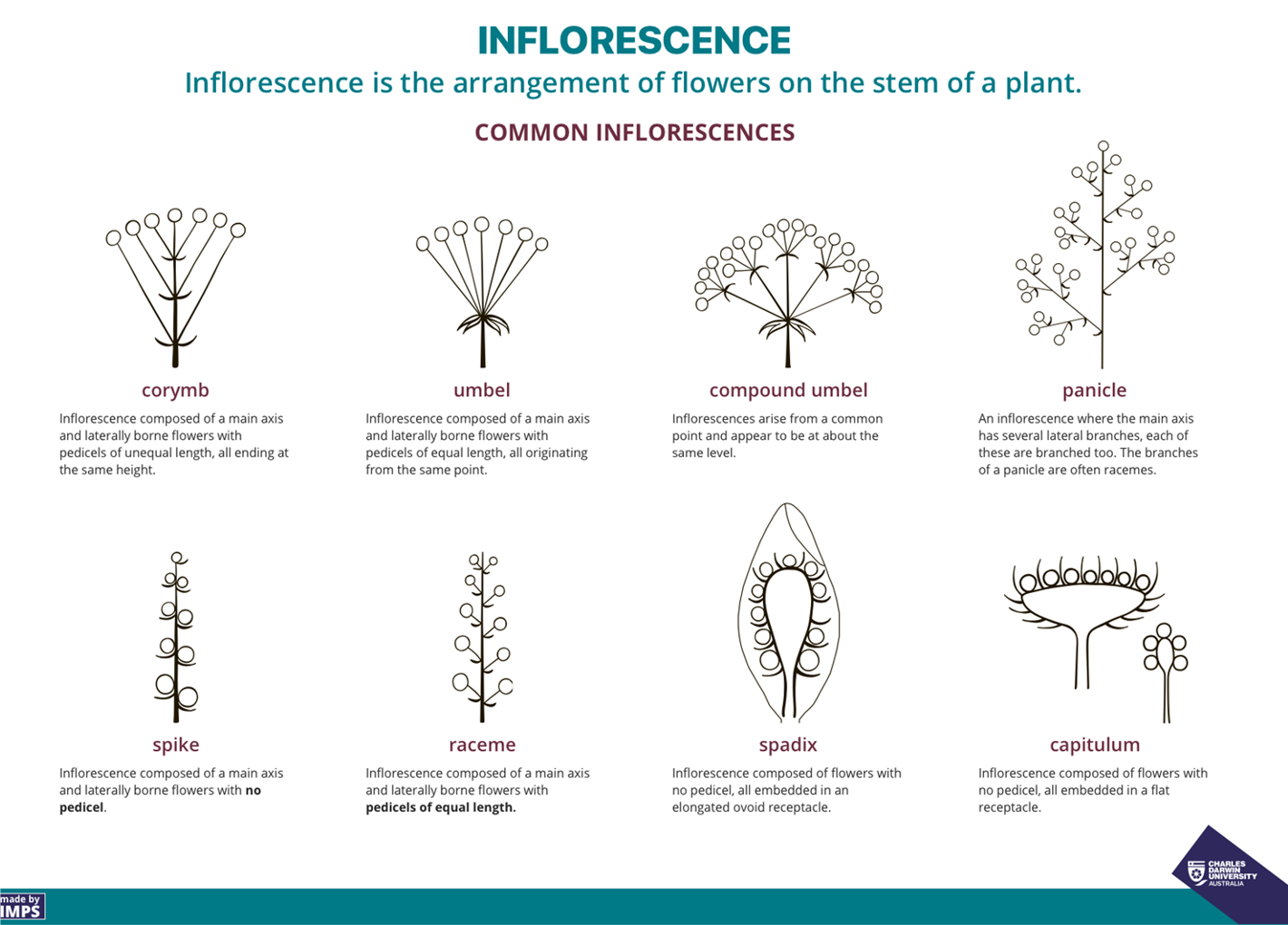
More definitions:
• Indeterminate inflorescences – first flowers to open are at the base; the youngest flower is at the top of the stalk
• Determinant inflorescences – first flowers to open are at the top; the oldest flower is at the top of the stalk
• Spike – an elongate, unbranched, indeterminate inflorescence with sessile flowers.
• Spikelet – a small spike, characteristic of grasses and sedges.
• Raceme – an elongate, unbranched, indeterminate inflorescence with pedicelled flowers.
• Panicle – a branched raceme.
• Corymb – a flat-topped raceme with elongate pedicels reaching the same level.
• Compound Corymb – a branched corymb.
• Umbel – a flat-topped or rounded inflorescence with the pedicels originating from a common point. Umbels can be determinate or indeterminate.
• Compound Umbel – a branched umbel, with primary rays arising from a common point, and secondary umbels arising from the tip of the primary rays.
• Capitulum (or head) – a dense vertically compressed inflorescence with sessile flowers on a receptacle and subtended by an involucre of phyllaries, characteristic of the Asteraceae. Heads can be determinate or indeterminate.
• Thyrse – a many-flowered inflorescence with an indeterminate central axis and many opposite, lateral dichasia; a mixed inflorescence, with determinate and indeterminate shoots.
